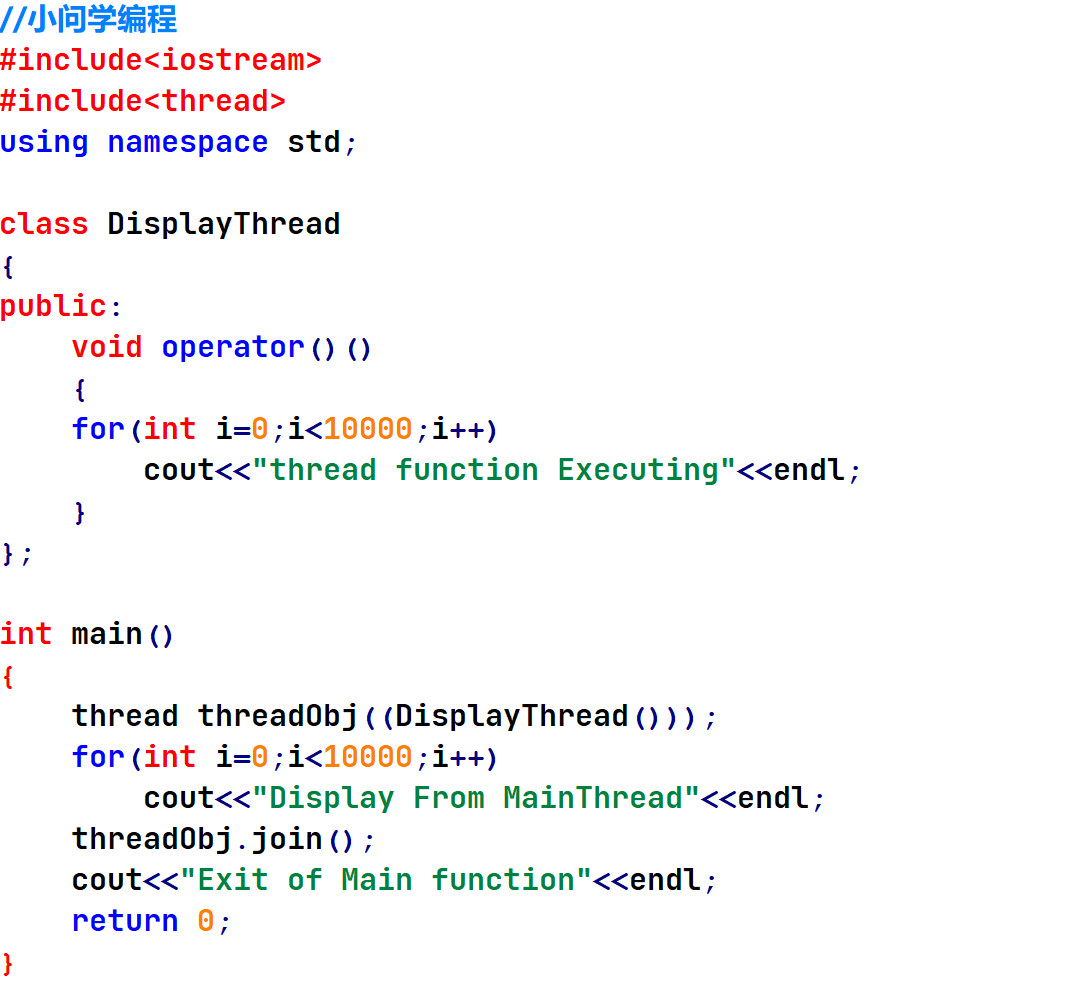在每个C++应用程序中,都有一个主线程(main函数)。在C++11标准中,创建线程可以通过类std::thread来创建。该类需要包含头文件:
初始化std::thread类对象,有三种参数传递方式:
函数指针
类对象
lambda表达式
例如,可以这样创建线程对象:

线程对象创建后,就可以并行地执行传递的回调函数。
如果在退出前,想等待所有线程结束再退出,可以使用join()函数。
线程在运行过程中,如果区分线程呢?
每个线程都有自己的线程ID,通过std::thread创建的线程可以使用std::thread::get_id()来获取线程ID。
比如获取当前线程ID:
std::this_thread::get_id()
如果std::thread没有关联任何线程对象,那么get_id()会返回一个std::thread的默认构造函数对象。
1. 使用函数指针创建线程

运行结果:

附上例代码:
//小问学编程
#include<iostream>
#include<thread>
using namespace std;
void thread_function()
{
for(int i=0;i<10000;i++)
cout<<"thread function Executing"<<endl;
}
int main()
{
thread threadObj(thread_function);
for(int i=0;i<10000;i++)
cout<<"Display From MainThread"<<endl;
threadObj.join();
cout<<"Exit of Main function"<<endl;
return 0;
}
2. 使用类对象创建线程

运行结果:

附上例代码:
//小问学编程
#include<iostream>
#include<thread>
using namespace std;
class DisplayThread
{
public:
void operator()()
{
for(int i=0;i<10000;i++)
cout<<"thread function Executing"<<endl;
}
};
int main()
{
thread threadObj((DisplayThread()));
for(int i=0;i<10000;i++)
cout<<"Display From MainThread"<<endl;
threadObj.join();
cout<<"Exit of Main function"<<endl;
return 0;
}
3. 使用lambda表示创建线程

运行结果:

附上例代码:
//小问学编程
#include<iostream>
#include<thread>
using namespace std;
int main()
{
int x=9;
thread threadObj([]{
for(int i=0;i<10000;i++)
cout<<"Display Thread Executing"<<endl;
});
for(int i=0;i<10000;i++)
cout<<"Display From Main Thread"<<endl;
threadObj.join();
cout<<"Exiting from Main Thread"<<endl;
return 0;
}